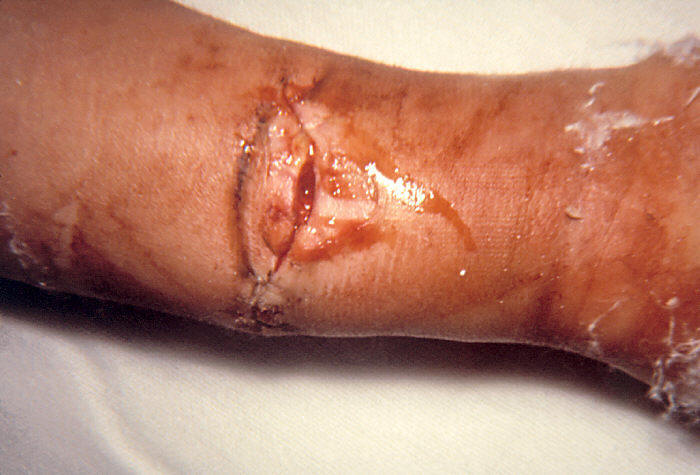Recently we did a lab in science to determine which compounds (protein, lipids, starch, and glucose) are in the food we eat. Starch is a energizing sugar found in plants, lipids are fats, glucose is a basic sugar, and proteins help make up cell membranes.
Each group received a food to run each compound test on. My partner was Sara, and our food was an apple.
To start with, we cut the apple up into small pieces. Then we ran the four different tests on about 5 mL of our food in different test tubes. To figure out if there was starch in our food we added 5 drops of Lugols iodine solution to one test tube (with 5 ml of apple). To find protein we added five drops of Biuret solution to another test tube (with 5 ml of apple) . To determine if there are lipids in our food we had to rub our apple on a piece of paper, hang the paper up, leave it over night to dry, and observe the paper in the morning. If there was a shiny (greasy) gleam on the paper, then the food has lipids in it. The test we did to determine if there is glucose in our apple was to add 3 mL of Benedict's solution to a test tube (with 5 ml of apple); put the test tube in a boiling water bath and observe the test tube for about five minutes.
Apples have glucose and starch in them, but they don't have lipids or protein. The other foods that were tested are egg yolk, egg white, potato, onion, strawberry, and lemon. Here is a chart of the results of the tests.
I thought this lab was really interesting. The lab taught me what type of substances are in the food I eat. I also thought that apples had protein in them; but after doing the protein test I learned that there isn't protein in apples. I also thought that lemons would have glucose in them because they are so sweet, but according to the chart (which could be wrong), they don't have glucose. I don't know for sure if that is correct, because other groups could have made any type of experimental error. However, until I know that the answer on the chart is wrong, I believe that lemons don't have glucose.
Some other results surprised me, but i'm happy that I wasn't certain about all of the test results. The lab helped me to better understand the four different compounds we tested for, which helped me on my test. Also, the lab helped me understand food and helped my ability to realize what is in certain foods.
.jpg)




